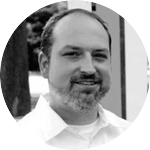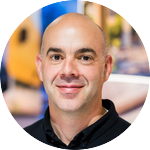
Separation from our community and family, devastating financial impacts, rampant inequities exposed in our systems. Community healing after disastrous events, such as those that have occurred over the past year, is a critical but an often overlooked aspect of recovery.
While these skills may be outside the typical “toolbox” of a local government manager, local government can play an important role in convening and facilitating the healing process, and some managers have called for help from an unexpected source—artists.
Before the pandemic, Michael Herbert, town manager of Ashland, Massachusetts, worked to address one of the toughest challenges a community can face. Years of corporate dumping in the 1970s left Ashland, Massachusetts, with an EPA-designated Superfund site that they are still recovering from over 40 years later. A study in 2006 revealed that the spike in rare cancers in town were connected to the contamination that continued to threaten the population. Much of the community was seemingly resigned to living with this reality, until a developer broke ground to build apartment housing on the site and an outcry began.
Angry residents filled Town Hall meetings in protest, armed with years of pent-up frustration and resentment that made plain the unaddressed trauma in the community. Dan Borelli, a local artist who witnessed firsthand the devastating impacts of the contamination, had been studying it and building relationships throughout the community for years. Understanding his unique position and talents as an artist, the town collaborated with Borelli to help catalyze community healing and address these unseen issues.
Borelli aided the town in utilizing storytelling and art to shed a light on the hidden pollutants that still impacted Ashland’s water supply. The project incorporated colored streetlights throughout the town that highlighted where and how the contaminants were concentrated. Borelli also created an art installation near the old factory site, a stained-glass structure that served as a place of healing for the community. With support from the town government to realize these installations, his work reignited a culture of resident activism that is pushing the EPA to expedite cleanup.
We interviewed Michael Herbert to get his take on what it was like to work with an artist on a community healing effort and how the lessons learned have been applied in the wake of COVID-19.
ICMA: How did this project help tell the story of your community and help you move forward?
Michael Herbert: When I first heard of Dan’s project, I asked myself, “why would we want to highlight something that was so bad about the town?” The community had worked hard to overcome the reputation of being dirty, sick. No one wants to be known as the first Superfund town where kids lost their lives, but I soon realized how important this was as part of our history and the impact it continued to have on the community.
If we can intentionally address our past and the challenges that come with it, we can become a model community who can overcome even the hardest of circumstances and make that strength and resilience a part of our story too. We decided we weren’t just going to try and forget because that was no longer working for us. We were going to embrace our history and take it a step further…this bad stuff happened to us, but we took it and used it to make us stronger as a community.
This kind of work in local government isn’t exactly conventional. Was there an “a-ha” moment that persuaded you and others that this was worth the investment?
By far, the thing I found most powerful to change perspectives were the stories. For aspects of this project, we moved away from the traditional role of local government and I had some trouble at first with myself and later with certain staff coming along. We learned from Dan, the artist, and started talking about stories as opposed to numbers, and that was really critical. It’s the difference between “a cancer cluster developed in this area and 90 percent exposed over a 10-year period developed this kind of cancer” and “Kevin Kane and David Keddy lost their lives to these chemicals.”
I think in any form of advocacy you must be able to tell a story instead of just recounting data and facts, and I think Dan was essential to telling that story and had the ability to show people the bigger picture: that we still had an immense amount of pain in our community that needed attention to heal. He showed us how badly we needed to have the discussion.
In Ashland, we have open town hall meetings, which can lead to great debate. We can get questioned for hours about spending $2,000 on a ream of paper, but as we moved away from data and more toward anecdotal storytelling we found an unprecedented level of agreement. Dan’s projects are unique in that they’re not just painting and sculptures, but they directly connected to the heart of the community. Nobody ever debated if the healing garden looked good or was worth the money spent. I can tell you that nobody has ever asked me once: “what does that cost?” The work we did with Dan had a way of transcending those conversations and people saw the value clearly.
The town made a significant investment as a direct result of Dan’s project in that we eventually purchased 180 acres of the contaminated land. Something that originally was so divisive allowed us to all come together in the end and it resulted in a tighter-knit community. When you have 400 people at a New England-style town meeting pass a purchase of that level almost unanimously, you know you’ve done something right.
What are some of the critical areas of success that made this “risky” project worth it?
We own part of the land now and are creating a multi-modal path that connects to downtown. We were able to attract a regional YMCA community center and age-restricted affordable housing where it was safe to do so, something our town desperately needed. The town is flourishing because we brought this up and worked together to create positive outcomes and take control of our community narrative.
But beyond those easily seen successes, we addressed a deeply seeded wound in the community and took responsibility for it. While the town wasn’t necessarily responsible for the decisions that resulted in the contamination, by engaging in the conversation we were able to make huge investments in the social cohesion of the town. We turned that pain into strength. I built authentic relationships in the community and made friends out of those who initially wanted to see me fired.
The value to our community really hit home when I saw two residents who nine times out of 10 are at each other’s throats in town hall meetings agree on something. Intangible rewards were staggering, town citizen satisfaction survey responses increased by 20 percent regarding the overall direction the town is taking, confidence in town government, and belief that the town was honest.
To what extent has engaging in this work changed the way you consider new problems or projects? Has your experience using these strategies helped you in managing the COVID-19 crisis?
I have a completely different view of my work and the town. I now look at my role not just as an administrator, but more as a community leader. We tend to focus on the technical aspects of our work and lose sight of why we got into public service in the first place. I wanted to do this job to help develop a genuine spirit of community throughout the town. Engaging in this work is the difference between “administration” and leadership. I learned how important it is to be willing to immerse yourself in the history and be a part of it, because so often administrators come from outside and need to do the legwork to understand where the community is coming from.
We have the ability as local government officials to reach a wider audience. We can use our platform to discuss why things are important, why we should support them, and how it fits into the larger picture. I now focus on not shying away from the uncomfortable or hard topics, but proactively try to address them head-on and have the trust from the community to do so.
In the wake of this particularly difficult year, it has become clear that these relationships contributed to our community’s resiliency and served us well in handling the myriad of challenges we faced together, including widely spread misinformation, restrictions and closures, and vaccine distribution. As we begin to come back together physically as a community, we are hyper aware of the value of communal spaces, such as the healing garden or our springtime farmer’s market, and their vital role in stitching our community fabric back together.
What advice would you give to other local government managers interested in working with nontraditional partners to tackle difficult conversations?
This is the kind of stuff that is not taught in MPA programs—but neither is handling COVID-19. It is something that is an unconventional skill set or area for local government managers to dive into, and it requires a leap of faith because you won’t have complete control over the process. I am a self-professed control freak, so this was very hard for me to do. But after going through this project, I now have a deeper respect and understanding of the ability of art to elicit so many different feelings and responses from the onlookers to powerfully unite the community.
So my advice would be to take all your preconceived notions about the arts and artists, throw them out the window, and be open minded about working with them on your toughest issues. Be willing to step outside of your “typical” duties. Don’t just look at the bottom line of the finances or the administrative details needed to engage in a project like this. Look at how it ties into a community and helps tell the story, and try to see it as an opportunity to invest in your community wellbeing.
Find like-minded managers and lean on them for support. While this was one of the most impactful and meaningful experiences of my career, there were times when it was incredibly difficult. A manager in the town next to me talked me off the ledge and really helped get me through the hardest points. The mentorship he provided to me was invaluable to get through this successfully.
Finally, as the American Rescue Plan brings new dollars into your community, intentionally involve artists in your recovery efforts. Invite local artists and cultural institutions to share their ideas on how they can play a role in healing past trauma, reinvigorating downtown spaces, or community engagement moving forward. I promise the dollars invested here will pay returns for decades in increased community social capital.
This interview was conducted for the new ICMA resource, Problem Solving Through Arts and Cultural Strategies: A Creative Placemaking Wayfinding Guide for Local Government Managers.

LINDSAY JACQUES, MPA, is a senior research associate, research and policy, at ICMA (Ljacques@icma.org).

MICHAEL HERBERT is town manager of Ashland, Massachusetts.

Meet the Artist: Dan Borelli is an Ashland native and independent artist. His practice intersects identity, ecology, and publics, and aims to use art to disrupt power structures so a more just, equitable, healthy, and beautiful world can emerge. Dan Borelli currently serves as the director of exhibitions at the Harvard University Graduate School of Design. Connect with Dan: www.danborelli.com, danborellistudio@gmail.com, Instagram: @danborelli.
New, Reduced Membership Dues
A new, reduced dues rate is available for CAOs/ACAOs, along with additional discounts for those in smaller communities, has been implemented. Learn more and be sure to join or renew today!
